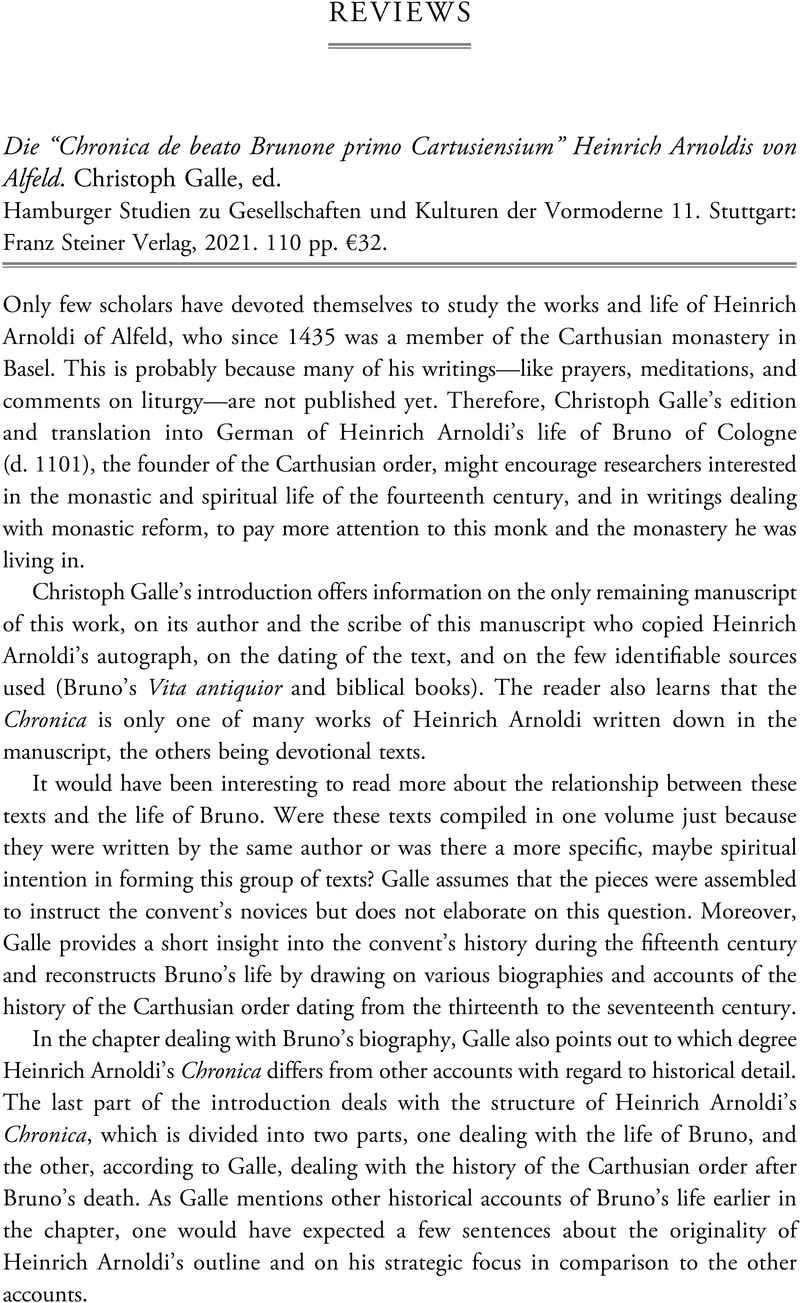No CrossRef data available.
Article contents
Die “Chronica de beato Brunone primo Cartusiensium” Heinrich Arnoldis von Alfeld. Christoph Galle, ed. Hamburger Studien zu Gesellschaften und Kulturen der Vormoderne 11. Stuttgart: Franz Steiner Verlag, 2021. 110 pp. €32.
Review products
Die “Chronica de beato Brunone primo Cartusiensium” Heinrich Arnoldis von Alfeld. Christoph Galle, ed. Hamburger Studien zu Gesellschaften und Kulturen der Vormoderne 11. Stuttgart: Franz Steiner Verlag, 2021. 110 pp. €32.
Published online by Cambridge University Press: 25 July 2023
Abstract
An abstract is not available for this content so a preview has been provided. Please use the Get access link above for information on how to access this content.

- Type
- Review
- Information
- Copyright
- Copyright © The Author(s), 2023. Published by the Renaissance Society of America



